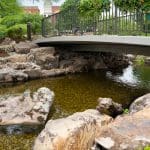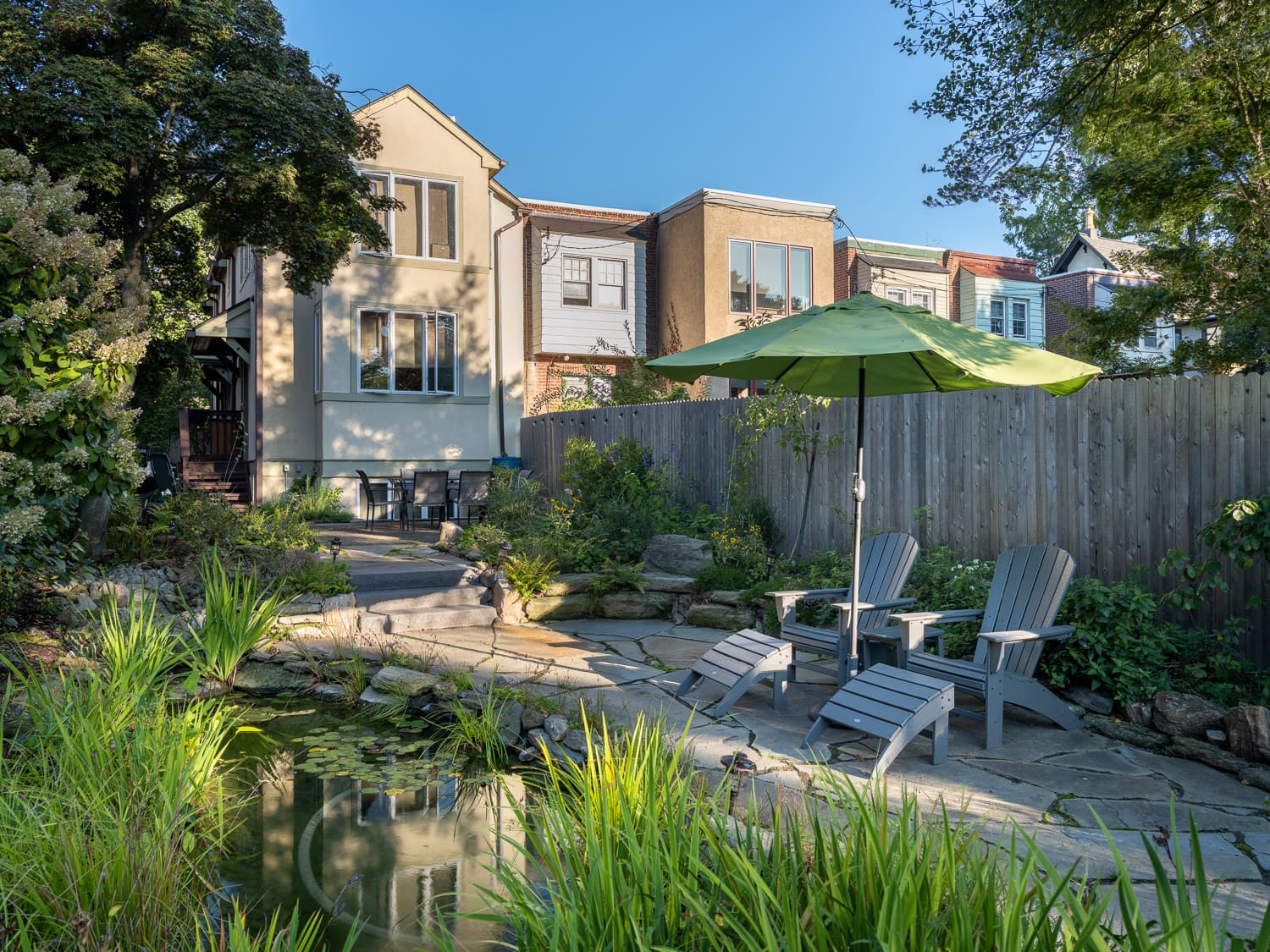
When the project began, this Philadelphia backyard was nothing more than a sloped yard of turf with drainage issues. However, GreenWeaver Landscapes, based in Lenni, Pennsylvania, quickly transformed the space into an inviting and functional garden with water features, natives, and a spacious patio.
Jennifer Nichols, president of GreenWeaver Landscapes, says winning a 2023 Gold Award of Excellence benefits her team and the environment.
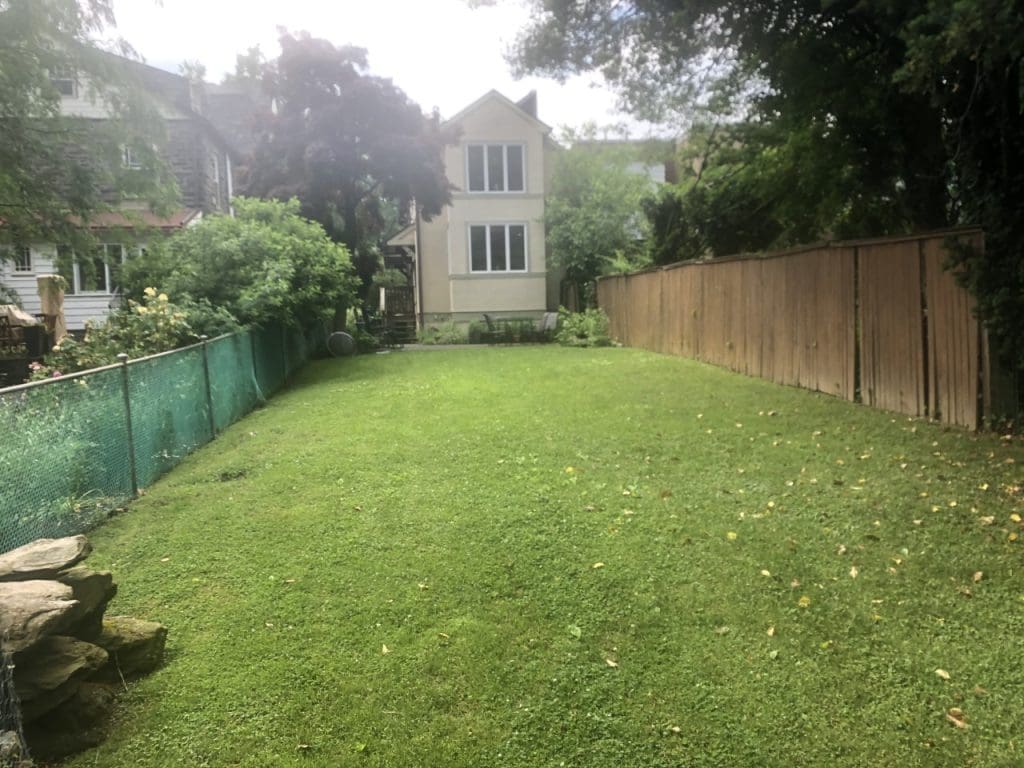
Photo: GreenWeaver Landscapes
“At GreenWeaver, we believe that the landscape industry has the opportunity and the responsibility to vastly improve the quality of life by creating a healthier and more beautiful planet,” Nichols says. “This award gives us a platform to advance the benefits of ecological landscapes and to challenge a limited view of what landscapes can be.”
From the start, this homeowner had a clear vision of how the backyard should look, beginning with a space for entertaining and a landscape resembling a dry oak heath forest. His goals for the yard were exact, but he was willing to listen and accept new ideas to improve his plan.
“Although the client had very specific requirements, he gave us creative control of large parts of the project,” Nichols says.“It was very rewarding to work with the client to turn his ideas into reality while managing stormwater and increasing the site’s ecological value.”
Dealing with Drainage
Drainage was a key factor, as the existing yard had runoff from impervious surfaces, causing erosion and unstable ground along the south property line. The owner wanted to let water drain into a pond with a bog filter to solve this issue. The GreenWeaver team recognized the pond would overflow during large rain events, so they recommended adding a rain garden near the pond to catch the overflow.
The concept plan from the owner helped determine the initial project scope, and many of the construction decisions were made on-site, allowing the team to communicate closely with the owner and explain their suggestions for specific project details.
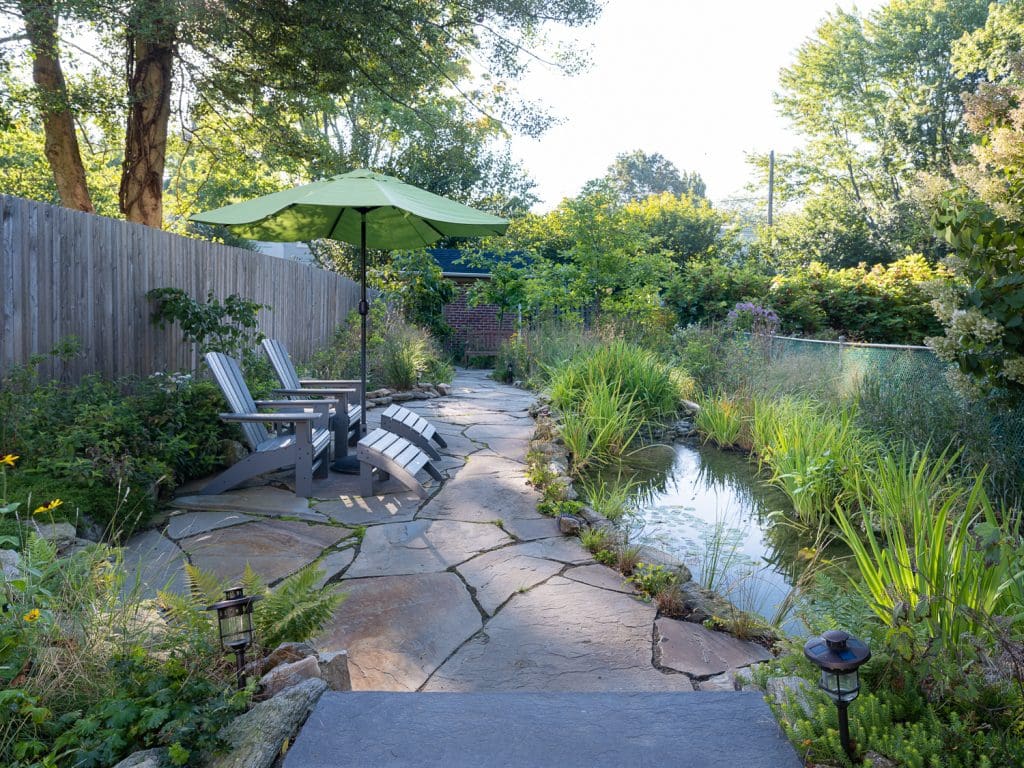
A bog filter was designed in-house and installed by GreenWeaver to manage the water health.
“The pond was excavated, and a shallow depression with a spillway that drained in the pond was created at one pond,” Nichols says. “A pond liner was installed, followed by a custom perforated pipe matrix. The pipe was hooked up to a 2” flex pipe, which was placed into the pond. The pipe matrix was then covered with pea gravel. Bog plants were planted directly into the gravel. Water from the pond was then circulated through the bog planting to cleanse it, then back into the pond.”
Several native bog species were used, including Iris versicolor (Northern Blue Flag Iris), Pontederia cordata (Pickerelweed), Juncus effusus (Soft Rush), and two species of carex (Carex lurida and Carex stricta). The excess water flows into a two-tiered rain garden during significant rain events.
Natives were an essential element for the whole project, as the owner sought to attract birds and butterflies while retaining the characteristics of a dry oak heath forest. This type of ecosystem tends to have dry, acidic, and shallow soils, so GreenWeaver worked with the owner to ensure the plant list was suitable for this specific environment. Crushed granite was used as a base for the hardscape instead of limestone to preserve the acidic soil.
Staging Challenges
The narrow site was a challenge for the crew at GreenWeaver, as materials had to be staged outside of the fenced backyard and brought into the site each day.
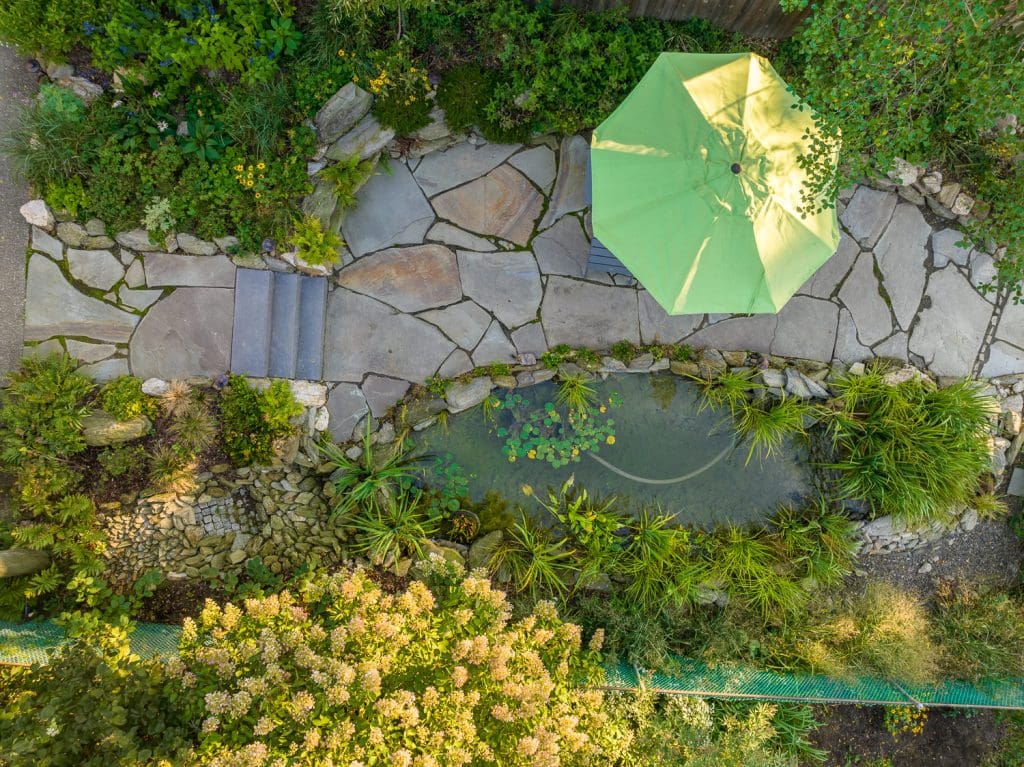
“The gate allowed minimal clearance for our equipment, but there was little room to maneuver once it was in the backyard, so we only used equipment for moving heavy stones, like the steppers,” Nichols says.“Many stones used along the pond and patio edges were salvaged from the excavation to minimize moving material.”
From start to finish, this project took three weeks with a three-person crew, and most of the planting was done by GreenWeaver, with the homeowner adding additional plants after the main project was finished. As his vision became a reality, the owner was excited to share the joy with his neighbors.
“The client is thrilled and has been promoting this project throughout his neighborhood and among his friends,” Nichols says. “He is a huge advocate for our work!”
Interested in participating in the Awards of Excellence? Be sure to enter your projects when entries open in February 2024.


